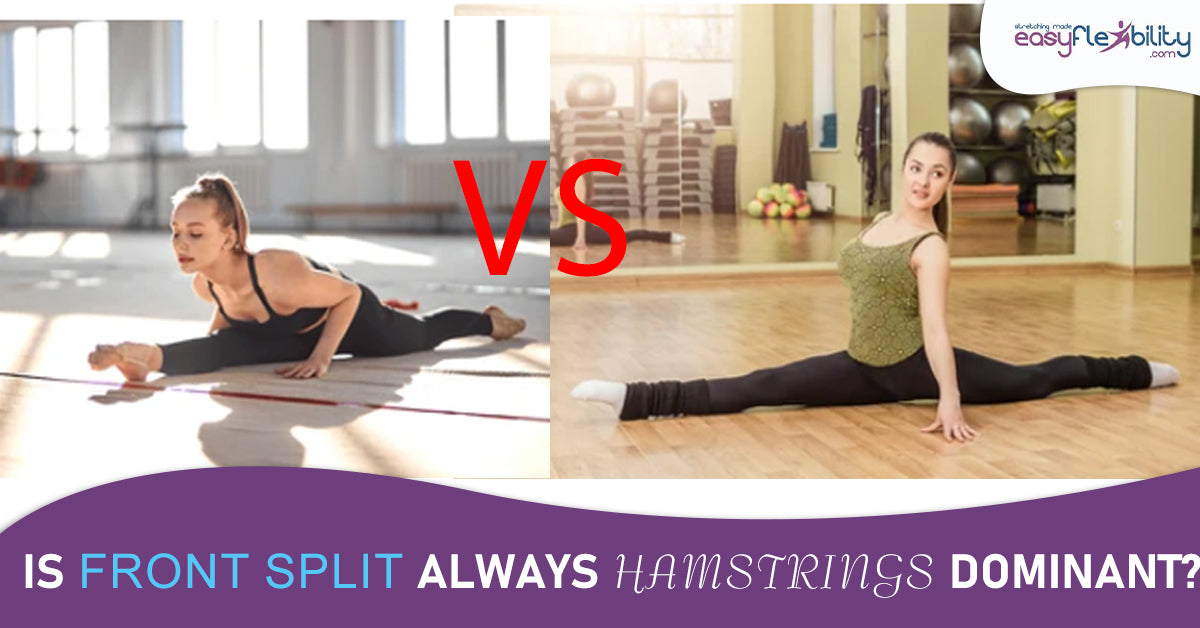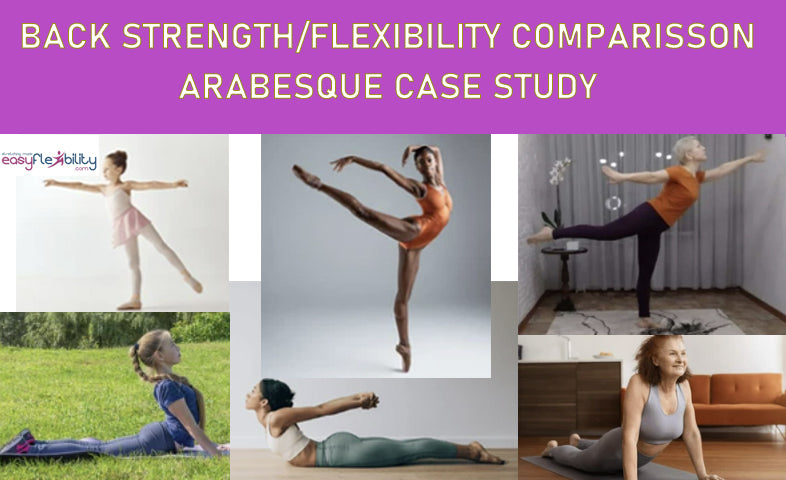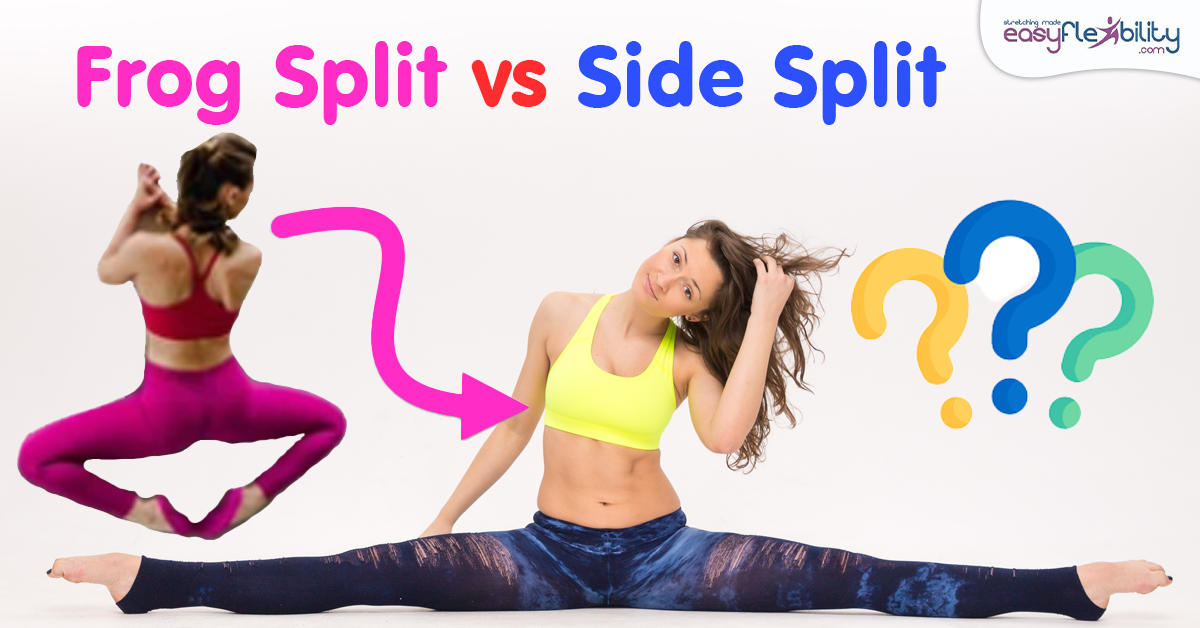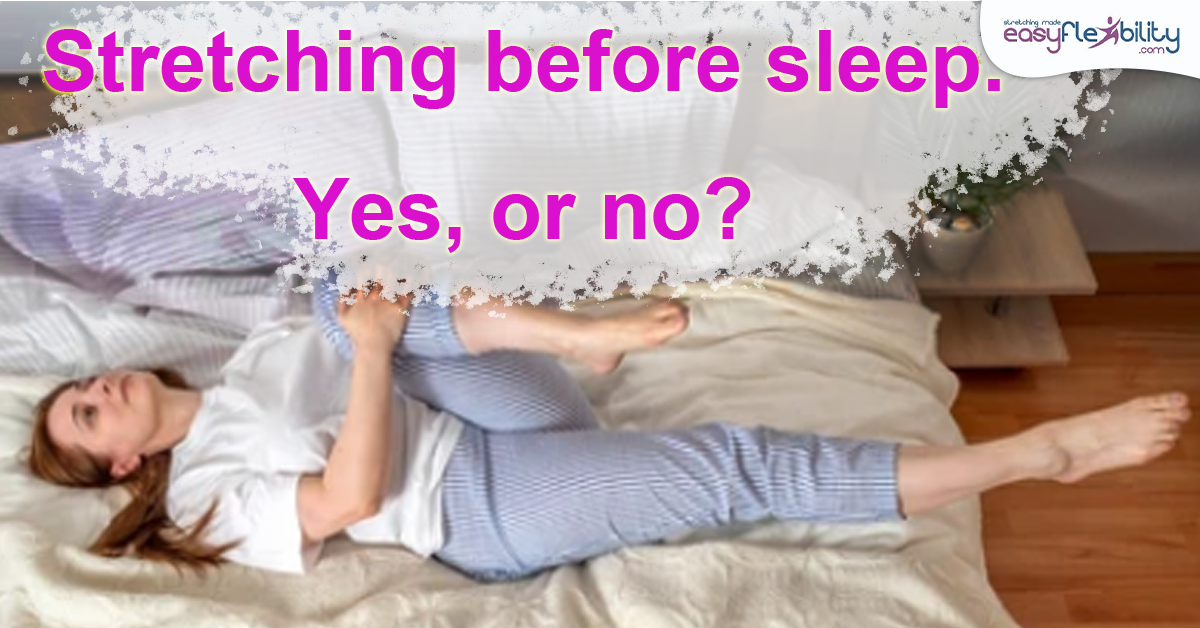L-Inching Excellent Hamstring Flexibility Retention and Utilization Technique
Posted by Paul Zaichik on

Stretching alone is NOT enough!
If you're familiar with the EasyFlexibility system, you know that stretching alone is not enough. Even if you get flexible with Zaichik Stretching Techniques, you want to retain that flexibility for the next training session. Retaining flexibility is a huge component of any of the EasyFlexibility programs.
Retaining hamstrings flexibility has always been a big challenge and it has been a big issue for many people whom we were testing in our research for the EASYFORWARD BEND certification program.
While Zaichik Stretching Techniques allow for very quick flexibility gains, retention exercises which are part of the EasyFlexibility programs are just as important. If someone is only doing the ZST’s without the supporting retention exercises the flexibility gained will not be retained for the next session. This is why we have developed proprietary supporting exercises to help you not only quickly gain flexibility but retain it as well.
To get fast progress you need to start a little bit more flexible at the start of each session and end up a little bit more flexible than you did in the previous session, then you get fast results.
Hamstrings Intermediate
Enjoy a complete follow-along workout for fast hamstrings flexibility tailored for intermediate students. In this Hamstrings Intermediate Program you will be introduced to our Proprietary Zaichik Stretching Techniques and Supporting Exercises that will help you to stretch the muscles that are tight in your body allowing you to easily reach your toes with fully extended leg.


Hamstrings are very flexibility resistant.
Hamstrings are very flexibility resistant. If you do stretching exercises that lengthen your hamstrings and then sit down for a long period of time, or stand for a long period of time you will lose the flexibility gained. What will happen is your hamstrings will shorten at the knee or at the hip due to prolonged sitting or standing.
To prevent that from happening the body has to use the flexibility it has gotten in the training session. Movement and Habituation Techniques together with strength techniques such as Extended Length Conditioning and Short Range Conditioning Techniques help to retain flexibility gained.
These techniques teach your body to accept new ranges of flexibility
These techniques teach your body to accept new ranges of flexibility by sending a message that the new range is now normal for the body. They tell your body that “this is your new range. You are comfortable in this new length. It is not just something you get after stretching, but you can actually operate in it.”
These techniques allow your body to understand this. And the range of motion becomes new active range of motion. New deeper range of motion, in which the body can move. This, of course works not only for the hamstrings but for any muscle group.
Try this special L-Inching technique to retain your flexibility!
Today we would like to present to you one of the techniques that we’ve developed for the EASYFORWARD BEND Certification Training Course. We have tested many techniques and left the most effective ones for each level. The EASYFORWARD BEND course contains 4 levels from Beginner to Very Advanced.
This technique is very simple but it was tested to be very effective as a retention technique.
Here’s how you do this hamstrings technique to retain your flexibility!

Sit down with your legs in front of you

Begin to inch forward by “walking” your pelvis

Place your pelvis on the right side forward. Your right leg will move forward a little bit.

Do the same thing on the left side.

Repeat the same movement alternating sides

Keep moving forward and then repeat the movement by moving backward in the same fashion.
It will seem that when you perform this technique nothing happens. It will look as if you are not changing any position of your hip or the length of your hamstring, but you do.
Because every time your right leg goes forward your left leg’s lateral hamstring, gets a little bit more stretched. And then it contracts from that position, but it doesn't contract forcefully it's more of a movement type technique to get familiarized.
The goal is not to try to stretch very deep here the goal is to move in a new range that has been developed from just practicing ZST's.
Here’s how to properly use the L-Inching technique for maximum flexibility retention.
So, if you are working on your forward bends, and increasing your hamstrings flexibility regardless of how flexible you are this technique will help to retain your flexibility. This technique is adjustable. You can adjust the position of your torso. You can adjust the angle of your knees. You can adjust if your feet are pointing or pulled back to your comfort level.
This technique can be done by inching your legs forward and back 4 – 6 times in each direction. And after doing this a few times Intermixed with your stretching techniques you will notice that your flexibility retention increases.
Not only will your retention increase but your flexibility gains will also increase.
Try this technique and let us know how it goes in the comments below.
Ready to get started? Thousands of people worldwide have achieved the same results you're dreaming about and you can too!

How do I pick the right level for me?
In order to pick the right level you can do a simple test. Answer this question: can you reach your toes having legs straight either sitting or standing?

- If you are not at all close then the Beginner Level is for you.

2. If you can reach your toes, or are almost there, then
the Intermediate Level is for you.
the Intermediate Level is for you.

3. If you can place palms flat on the floor, and can't really feel a strong stretch or you do but you can hold it comfortably for 30 seconds, then the Advanced Level is for you.
Hamstrings Beginner Level Program
Most people simply don’t know where to start when it comes to working on hamstrings flexibility. It’s tough being a beginner and that applies to every field. But that’s why we’re here to help!
Our highly-structured program works with people to guide them down the path of least resistance for visible, lasting and fast results.
Made for people just like you it will address all areas you need to work on, and have you on the right track in no time.
This is the surest, fastest way for beginners to start seeing some results immediately after starting.
Our highly-structured program works with people to guide them down the path of least resistance for visible, lasting and fast results.
Made for people just like you it will address all areas you need to work on, and have you on the right track in no time.
This is the surest, fastest way for beginners to start seeing some results immediately after starting.
Hamstrings Intermediate Level Program
Each of the exercises in the package targets a specific group of muscles for an optimally balanced workout. This allows for even spread of the applied pressure and ensures your entire body actively participates in the routine. We’ll help you work your way to success – one sweat at a time.
Our carefully structured routine prepares the body for what’s coming next by relaxing, stretching and flexing all muscles individually. This optimizes your performance and improves your speed, agility and flexibility. A body that has been properly prepped up for a workout achieves far better results; not to mention avoiding the risk of injury or pain. If you’re committed to a goal you’ll do the smart thing and do it right – from start to finish. No excuses!
Our carefully structured routine prepares the body for what’s coming next by relaxing, stretching and flexing all muscles individually. This optimizes your performance and improves your speed, agility and flexibility. A body that has been properly prepped up for a workout achieves far better results; not to mention avoiding the risk of injury or pain. If you’re committed to a goal you’ll do the smart thing and do it right – from start to finish. No excuses!
Hamstrings Advanced Level program
The Advanced Hamstrings routine is for those of you who are familiar with the Zaichik Stretching techniques and can comfortably implement the routine. It takes things up a notch by introducing muscle contraction in addition to muscle action for an even more intense workout.
Our Advanced Hamstrings program helps you develop full control and strength of the hip. And this will aid you in performing a number of positions necessary in most sports or dancing routines. This is the surest way to nail it the next time you’re put in the spotlight!
Hamstrings Double Stretch Program
Testing the flexibility of both hamstrings at the same time has been known as the standard bench mark of flexibility for generations. In yoga this position is practiced standing, sitting, laying down, etc. Here is a list of some of them.
The challenge here is obvious. Two legs have to be stretched at the same time, with all the muscles restricting the hip flexion, are now times two. Because of such a high resistance, trying to master double hamstrings stretch incorrectly, will force the more flexible part of the body to give, and unfortunately that is the lower back.
In other words, standard forced stretch method, bring a high level possibility of injured lower back.
The challenge here is obvious. Two legs have to be stretched at the same time, with all the muscles restricting the hip flexion, are now times two. Because of such a high resistance, trying to master double hamstrings stretch incorrectly, will force the more flexible part of the body to give, and unfortunately that is the lower back.
In other words, standard forced stretch method, bring a high level possibility of injured lower back.
© ElasticSteel Corp., EasyFlexibility, Paul Zaichik, et. El., 2023. No part of the materials available through ElasticSteel.com, EasyFlexiiblity.com, site may be copied, photocopied, reproduced, translated or reduced to any electronic medium or machine-readable form, in whole or in part, without prior written consent of Paul Zaichik EasyFlexibility.com, Elasticsteel.com.. Any other reproduction in any form without the permission of Paul Zaichik EasyFlexibility.com, Elasticsteel.com is prohibited. All materials contained on this site are protected by United States copyright law and may not be reproduced, distributed, transmitted, displayed, published or broadcast without the prior written permission of Paul Zaichik, EasyFlexibility.com, Elasticsteel.com.
Share this post
- 0 comment
- Tags: easyflexibility, flexibility, hamstrings, kinesiological stretching, lateral hamstrings, stretching, stretching for splits, supporting, Training Flexibility, zst exercise
0 comment
















